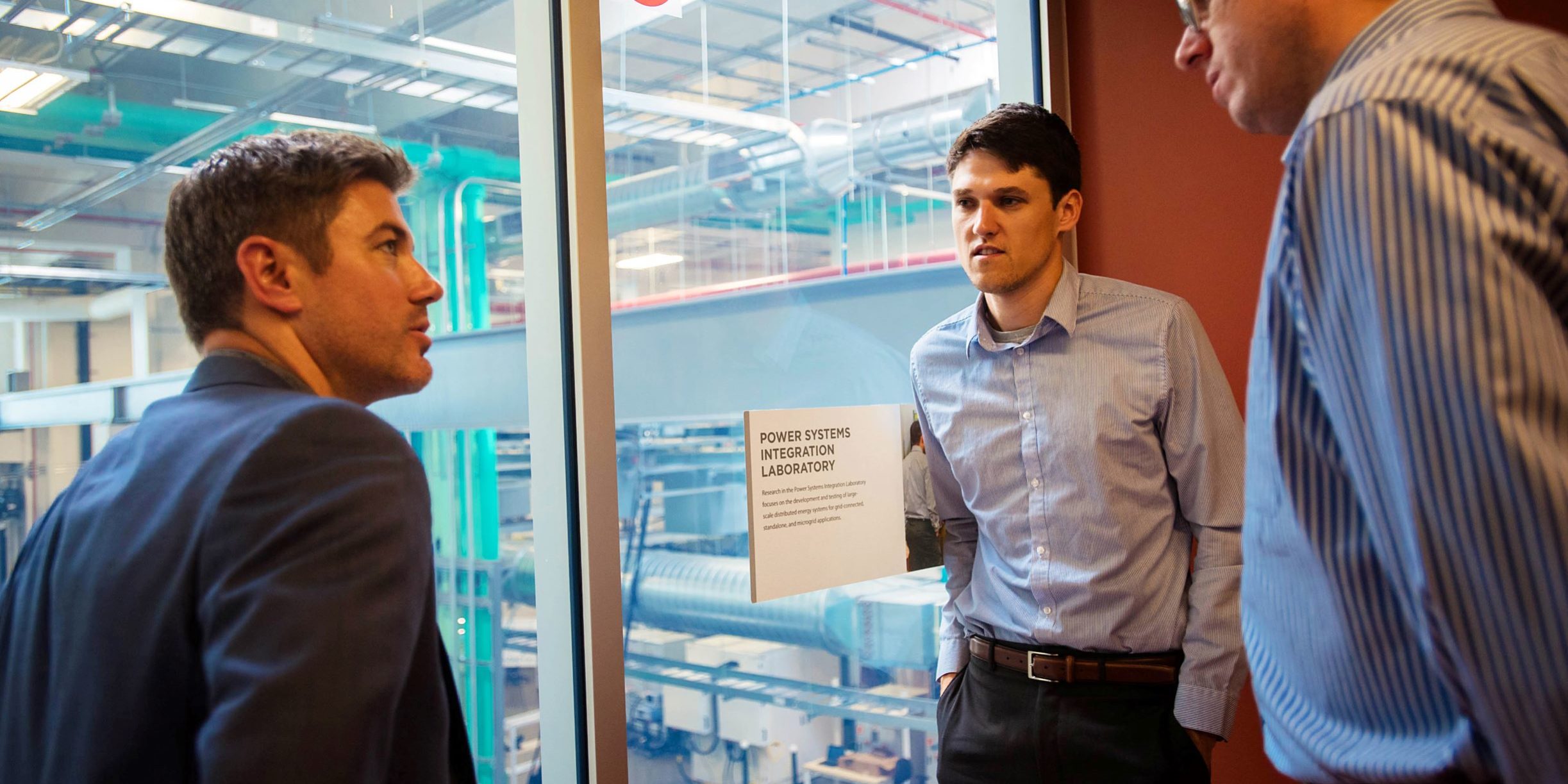March 10, 2020
The story of Hygge Power starts with late Christmas presents, a whiteboard “aha!” moment, and one very lucky Uber ride.
Caleb Scalf, CEO of the startup currently working with NREL as part of the Shell GameChanger Accelerator Powered by NREL (GCxN), was a project manager working from his apartment in Boulder in 2016 who faced an ongoing problem: his power would regularly go out, sometimes for hours.
It was bad enough on workdays – but then of all days it happened on Christmas. The electronic lock on his front door went dead, stranding the presents inside.
“I thought: this is insane,” Scalf said. If this was happening to residents of Boulder, Colorado, an affluent city with well-maintained infrastructure, then how common was this elsewhere?
Scalf, who had worked for utilities in the power and water sectors through companies including Uplight (formerly Tendril), Wood (formerly Amec Foster Wheeler), and Metron-Farnier, saw a problem ready to tackle. “I knew about the climate effects of energy storage, and I realized we just had to do something in that space.”
He began to investigate opportunities locally, working with some Boulder startups and doing his own market research. One day, in a moment of frustration, Caleb scribbled across a sketch of a Tesla Powerwall on a whiteboard at his home.
He stepped back, and thought, “What if the Tesla Powerwall could be divided into many smaller Powerwalls to achieve optimal results— accessible, affordable, and small enough to simply plug in—yet leveraging electric wiring already in our walls to make one big battery for critical areas of our homes?” And that was the beginning of what would become multiple iterations of Hygge Power’s systems.
Ride-Sharing Really Does Bring People Together
Hygge’s next advance came by serendipity. Scalf met his co-founder, Max Lewin, while Lewin was driving an Uber around Colorado.
Lewin, a mechanical engineer by training, had just moved from Boston and was moonlighting while looking for work. Sitting in the back seat, Scalf happened to mention that he had a startup working on energy storage – and had just lost his design engineer.
Lewin was new to the world of energy. After learning about our country’s aging grid infrastructure, Lewin realized how excited he was about the opportunity to participate in crafting the future of energy storage as a product engineer.
“My job is to understand what’s going on in multiple spaces, recognize what the devices in those spaces are doing, and the user experiences around those,” he said. “I can find out what’s lacking and then to guide our product to becoming the next cutting-edge device.”
The Energy Storage Market is Huge: Where to Plug In?
After three years of market research, product development, and extremely long days, Hygge Power will launch its first two products in 2020: an in-home battery storage system and a smart outlet that allows for a new level of control over home energy use. A bonus: both are appropriate for renters, as well as owners.
Hygge’s road to NREL has included partnerships with Duke Energy and AEP Energy to develop its strategy. Selected as one of GCxN’s “Grid of the Future” companies, Hygge is working with Principal Researcher Dr. Anthony Florita to perform tests of its software and hardware before launch.
Hygge’s GCxN program consists of three stages, spread out over 18 months. The first stage will be to test the power electronics internals at the high level of precision available with the equipment at NREL’s facilities.
The second stage will consist of computer modeling and simulation to see how and where the Hygge products can fit into the grid. The idea is to see what efficiencies could be achieved by utilities through widespread adoption of the Hygge product. If the math is right, utilities could support consumer purchase of the Hygge storage system, which goes to market at the end of 2020.
The third stage is to bring “lessons learned” from stages one and two, and produce the final prototype that NREL will analyze.
More than Just Back-up
Over the last five years, the energy storage market has been booming due to the expansion of renewable energy generation. In addition, extreme weather events like the California wildfires of 2018 have highlighted the importance of energy resilience as an important market factor.
Hygge products may have gotten their start by solving a back-up problem, but when you talk to Scalf, he says there’s much more to it than that.
“The backup-power function is used rarely, perhaps once or twice a year. So what can you do with that power the other 99 percent of the time?” Scalf asks.
The idea is that once residents have control over their own power usage, they have options. They can choose to store energy at a time of day when they know that the generation source is clean, or sell the energy to others, in what Scalf calls “a sharing economy of electrons and data.”
The energy storage market is vast, and varies greatly by geography. Hygge is also working with the utility in Tokyo, TEPCO, which provides power to the dense city where smaller, modular storage products are desirable.
“In a condo or apartment, it’s pretty hard to install energy storage, let alone pay the installation premiums. That’s 50 percent of the market that can’t have access to energy storage,” Scalf said. “By 2050, 70 percent of the world’s population will be living in urban areas. We’re hoping to serve those customers.”
Check out Hygge’s website here.




